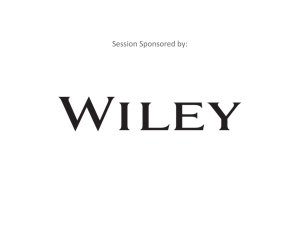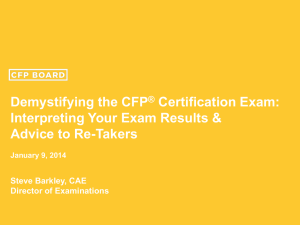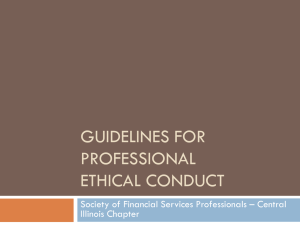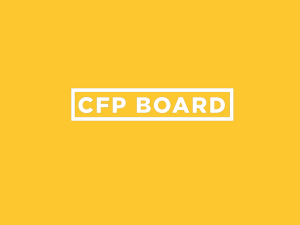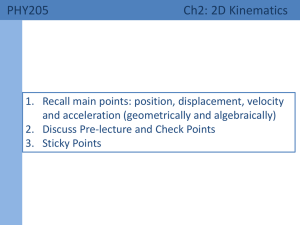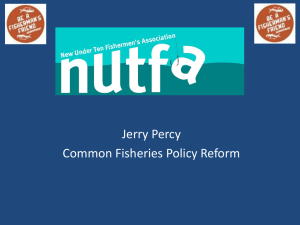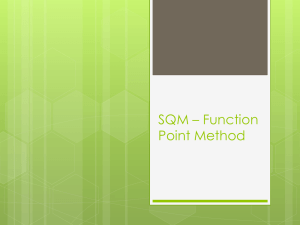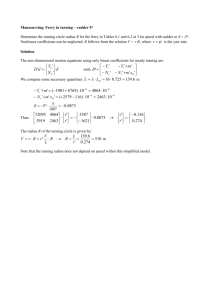Man.ch2
advertisement
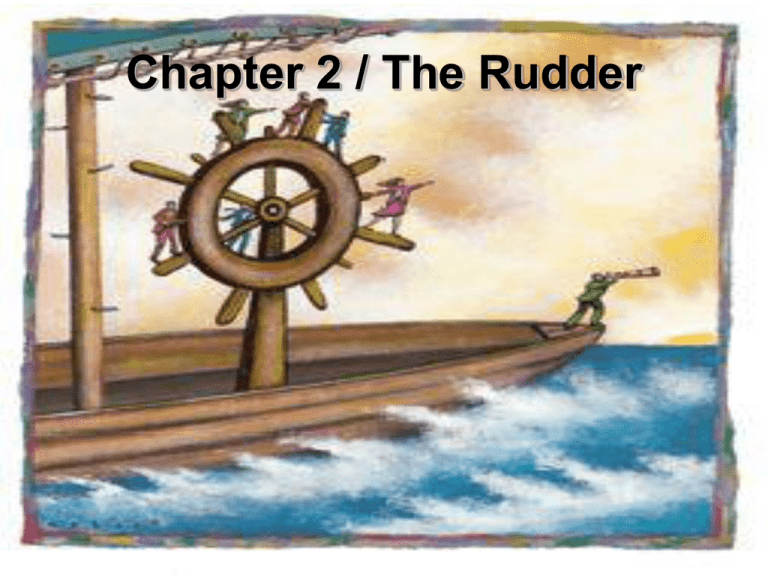
Chapter 2 / The Rudder Ch2. Forces acting on the ship / Straight course With Rudder amidships and constant speed: Thrust due to the propellor and resistance of the water in the longitudinal direction are in equilibrium Ch2. Forces acting on the ship / Rudder to Sb Ch2. Phase one of evolution to Sb The vessel starts turning to starboard but is slightly drifting to port Ch2. Phase 2 of evolution to Sb - Water resistance is shifting to port accelerating the turning moment to starboard -Force Q1 opposes force Q -Speed is diminishing Ch2. Phase 3 of evolution to Sb Equilibrium between the force on the rudder and the forces exerted by the water on the portside hull forward and afterward of the center of gravity/ Pivot point: rate of turn and speed are constant. Ch2. Drift angle Ch2. Drift Angle Ch2. Drift angle at center of gravity Ch2. Pivot point / ship stopped Pivot point coincides with the center of gravity Ch2. Pivot Point / Speed ahead With headway: the pivot point is moving forward , as a result of the water pressure at the bow Ch2. Pivot Point / Speed Astern Pivot point is moving astern as a result of the water pressure on the stern Ch2. Influence of Block coefficent on Pivot Point The pivot point of a vessel with a large block coefficient is closer to the bow: the efficiency of the rudder (steering capacity) increases Ch2. Avoiding an obstacle at short distance Ch2. Swinging room required when turning -Stern of Ship A too close from berth to allow for a safe turn of A to starboard Ch2. Heeling Angles during a turn to port Fase one Fase 2 Ch2. Change of trim during a turn Point of application of ware resistance on the rudder is lower that the centre of gravity/ pivot point: a change of trim by the head is occuring during a turn Ch2. Reduced rudder effect with sternway - Water resistance applies on back of rudder: effect reversed - Propellor wash does not strike the rudder - Pivot point moves astern and turning lever of rudder force is reduced Ch2. Maximum rudder efficiency - Maximum rudder efficiency is obtained with a rudder angle of approx. 30° to 35° -The best compromise between rudder efficiency (lift)and water resistance (drag) is obtained with this value of the rudder angle Ch2. Rudder critical angle / Stalling Phenomenon Ch2. Influence of list on a turn The vessel is listing to Port and has a normal tendency to turn to port: will favour port rudder but reduce starboard rudder. Ch2. Influence of Block coefficient on turning characteristics Containership : Cb = 0,6 Tanker: Cb = 0,8 • Transfer and tactical diameter practically similar • Turning radius of tanker much smaller • Drift angle of tanker much bigger • Pivot point of tanker closer to the bow Ch2. Comparison: slender and full bodied ships Ch2. Form of the ends • Ship A is equipped with a bulb and has a better directional stability and offers a bigger lateral resistance during a turn than ship B • Ship B enters earlier in his turn than A Ch2. Effect of wind on a turn •Between a and b’: turns faster •Between b’ and c’: turns slower •Between c’ and d’: turns faster •Between d’ and e’:turns slower Ch2. Effect of the current on a turn •The vessel is moving together with the mass of water • The vessel drift in the direction of the current Ch2. Rate of turn Indicator This instrument is very important: • It indicates the speed of the turn (number of degrees in one minute) • it marks « zero » when the vessel is stabilised on a straight course Ch2. Turning circle: 1. Rudder angle is applied 2. Ship enters her turn 3. Variation of the heeling angles 4. Turning diameter 5. Transfer 6. Advance 7. Drift Angle Ordres de barre standards Zéro la barre Babord (ou tribord) cinq , dix , quinze , vingt . Babord (ou tribord) toute . Droit comme ça . Quel est votre cap? Gouvernez ..... 124 ( un deux quatre) 217 ( deux un sept ) 000 ( zéro zéro zéro) Rien à babord / tribord Doucement la barre Revenez doucement Babord / tribord un peu Rencontrez Surveillez la gouverne Droit sur ... (phare) Standaard roerbevelen Roer midscheeps Bakboord vijf , tien , vijftien, twintig . Hard bakboord ( stuurboord) Recht zo Wat is uw voorligging? Stuur ..... 124 ( een twee vier ) 217 ( twee een seven ) 000 ( nul nul nul ) Niets aan bakboord /stuurboord Minder roer geven Langzaam opkomen Een weinig bak / stuurboord Tegenroer geven Opgelet aan het roer Rechtaan op ... (vuurtoren ..) Standard helm orders Midships the rudder Port five , ten , fifteen , twenty . Hard to port (starboard) Steady as you go What’s your heading? Steer ..... 124 ( one two four) 217 ( two one seven ) 000 ( zero zero zero ) Nothing to port / starboard Easy ( ease the rudder ) Come back easy Port / starboard easy Meet her Mind / watch the rudder Steady on ... ( lighthouse..)


